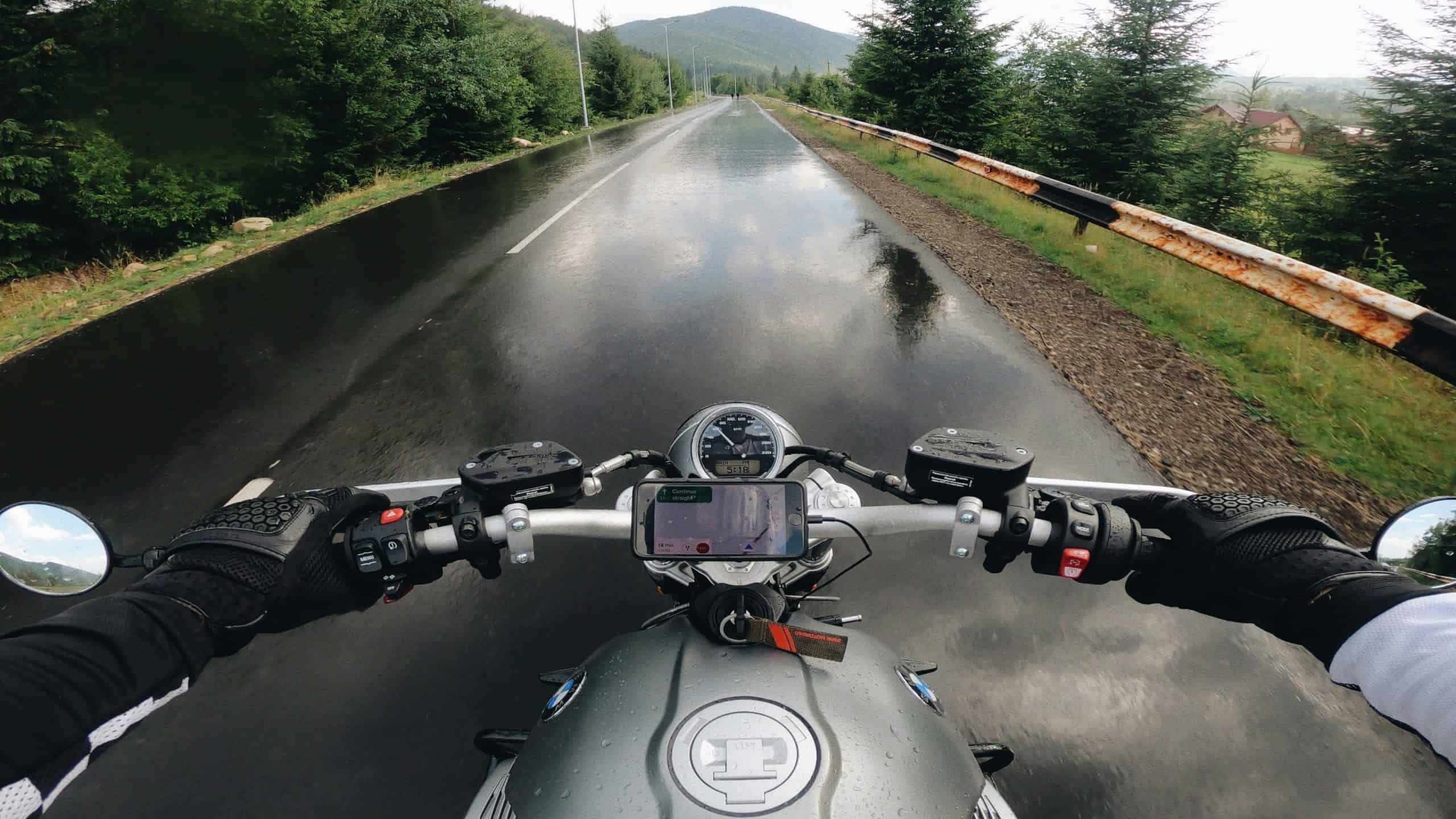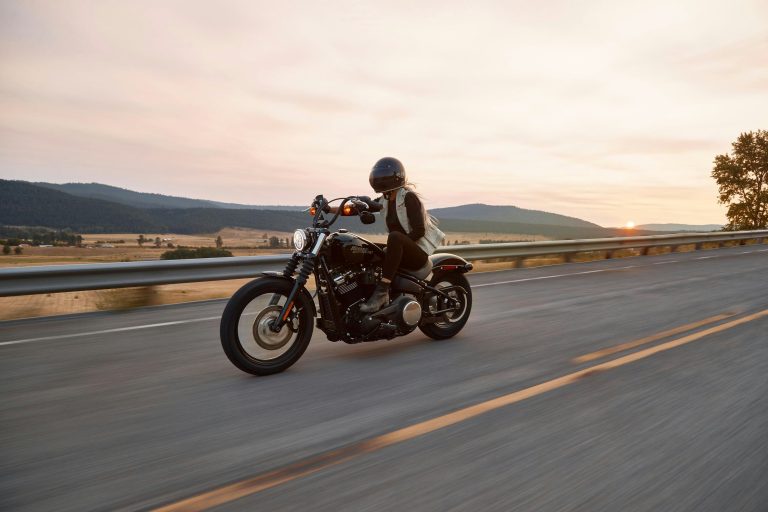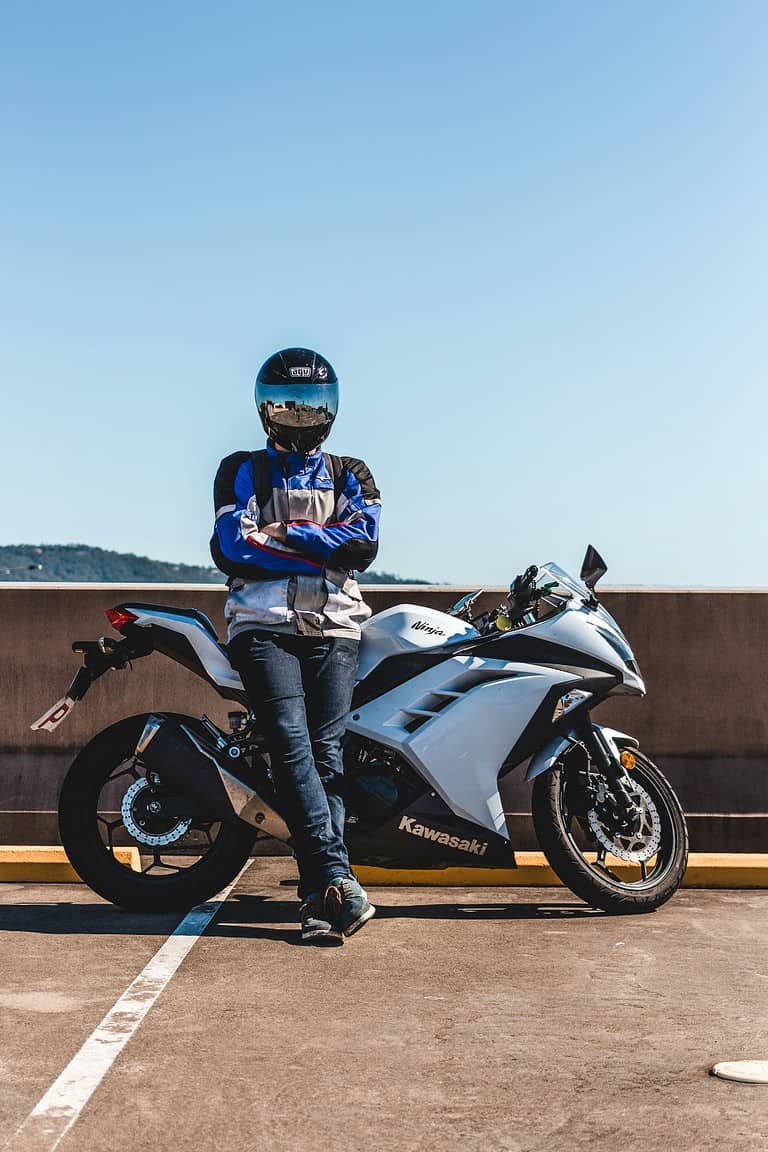How to Start Motorcycling: The Complete Beginner’s Guide
Introduction
Did you know that over 8% of Americans own a motorcycle? Despite a relatively small number of riders nationwide, that number is growing, and the spirit of the open road is calling. Starting your motorcycle journey can feel intimidating – what bike should I get? What gear do I need? Will I have what it takes to learn to ride? But don’t worry, everyone begins somewhere, and I’ll give you the run-down of how to start motorcycling.
Whether you’re drawn to feeling closer to the road, saving on fuel costs, or simply feeling cool, learning to ride a motorcycle is an adventure worth taking. In this guide, I’ll walk you through everything you need to know to start riding safely and confidently. Kickstands up; let’s get on with it!

Determine if Motorcycling is Right for You
I have always said if you can ride a bicycle, you can ride a motorcycle. The concepts are extremely similar; things are just a lot heavier and faster, and you’ve got an engine between your legs. That can feel a little bit daunting at first, but that’s the whole point of safety courses and training. Just like bicycles, motorcycles take a bit of balance and coordination, even more so due to the additional controls on the bars and feet.
Remember that the bike is not your only cost; gear is critical, as is maintenance for your bike, and training. Riding can be risky, and you don’t have the same protection as you do in a car. Think about why you want to ride, take a safety course, and try it out. And ultimately, if you decide that it isn’t for you, that’s okay too!
Motorcycle Terminology for Beginners
As with any new hobby, motorcycling comes with its own lingo: technical terms, abbreviations, and common language to be able to chat with other riders and mechanics alike. If you’re mechanically inclined and get into the maintenance side of things, you’ll have to understand different motorcycle parts, their various functions, and how they work together. I can’t promise it’ll come without a lot of flying curses, but working on your bike, in my opinion, is something everyone should do.
Get Your Motorcycle License
Getting your motorcycle endorsement varies from state to state: each has its own requirements, documentation, and identification needed for the application. Generally speaking, you will need to pass a permit test, and then pass a written test and a riding test. Your permit has different restrictions than a full endorsement. Check your state’s requirements carefully to make sure that you are adhering to the relevant rules and regulations. I highly recommend taking a Motorcycle Safety Foundation (MSF) Basic Rider Course (BRC), which will teach you the basics of controls, maneuvers, and more.
Motorcycle Controls
Motorcycles operate differently than even manual cars do. Some coordination is needed between all four limbs to be able to ride safely. Spend some time understanding what each of the controls does, and how they work together. Understand how the friction zone works for your clutch, and how to safely brake using both the front and rear brake. Spend lots of time practicing in parking lots, and develop muscle memory for your controls, freeing up mental capacity for attention on the road.
Motorcycle controls vary slightly across brands and styles; making sure you take time to know your specific bike’s controls inside and out will drastically help your confidence and learning speed.
Motorcycle Startup Costs
The initial investment to get into motorcycling goes far beyond just the motorcycle. These are hidden costs that many beginners don’t anticipate. You’ll need to make sure that you budget appropriately for your first set of essential safety gear and equipment, any motorcycle safety courses you may take, licensing and registration fees, and premiums for insurance. In addition to those initial costs, you’ll have recurring insurance fees and costs associated with maintenance and upkeep. I’d highly recommend that you always carry a basic tool kit and learn how to use it.
Essential Gear for New Riders
Each rider can choose their comfort level with the gear they choose to buy relative to levels of risk. That said, I would recommend, at a bare minimum, a full-face helmet, a riding jacket and pants (including armor), and a pair of gloves and boots specifically designed for motorcycling. Beyond the basics, you may end up wanting different sets of gear for seasonal changes that enable you to ride year-round. In the colder, winter months, especially in rainy areas, you’ll want to consider how visible you are and opt for hi-vis gear and reflective elements as well.

First Motorcycle Safety Course
While not required, there are many benefits to taking a Motorcycle Safety Foundation (MSF) Basic Rider Course (BRC). You’ll learn the basic skills and knowledge to get you on the road, and it will set you up to be able to practice on your own. Proof of successful completion of a course can often help with reducing insurance rates, and in some areas may cover the requirements of the road test to get your endorsement. Take a look around your area to see what courses are available, and what to expect during your first formal training experience.
Choosing Your First Motorcycle
There are tons of options to pick from when it comes to choosing your first motorcycle. Typically, starter bikes are smaller displacement bikes (250-500cc) due to their light weight that can help build comfort and confidence. Buying new offers peace of mind in knowing that you’re getting something factory fresh, while buying used can significantly save on the initial cost, allowing you to spend more on gear and upgrades. I’d recommend buying used, as this first bike is one you’re likely to drop at some point – don’t worry, it happens to everyone.
Take some time to research different styles of motorcycles that you feel will match not only your height and weight, but also your riding style. That may change with time; but this is just to get you started!
Used Motorcycle Inspection Checklist
It’s your first bike, and you want to make sure that you’re not inheriting a big set of problems, but buying used can be great to save some money on the initial investment. If you’re not sure where to start, bring along an experienced friend to take a look with you.
Generally speaking, check for indications that the bike has been well taken care of: service records and documentation of the history is a great indicator. Look for leaks of any fluids, significant wear to items like cables and brake lines. Ask to hear the bike start up from a cold state, and note any strange sounds during start-up and idle. Finally, take it for a spin! A test ride is the best way to see if you’ll even like riding it.
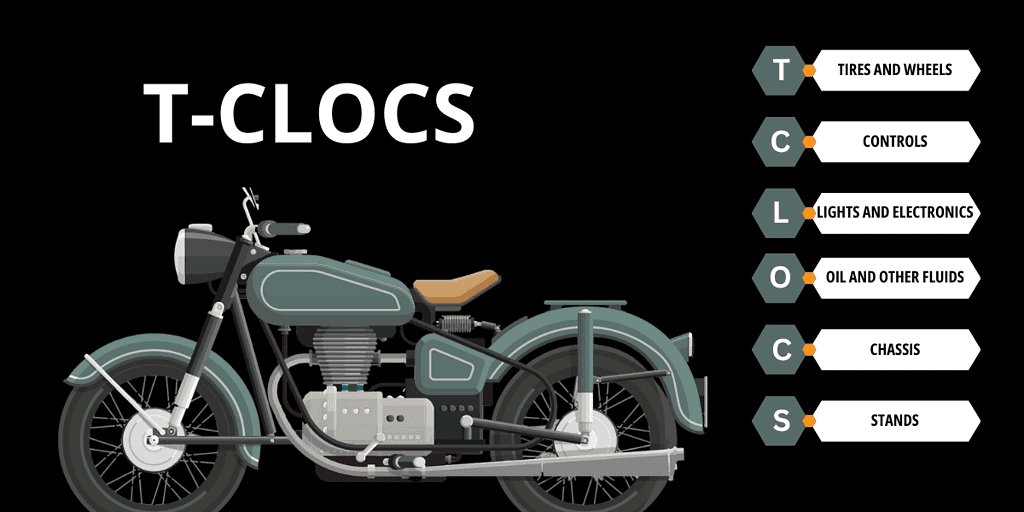
Motorcycle Parking Lot Practice
Skills practice doesn’t end once you complete your first safety course. It’s important to consistently go over drills so that your body develops muscle memory – the quicker you are with recall, the safer you’ll be on the road. Parking lots are the perfect place to go through all kinds of drills, using cones and markers to improve precision riding. It’s also the perfect spot to practice slow speed maneuvers that build confidence before using them out on the public roads.
Motorcycle Tips for Short Riders
Motorcycling objectively can be daunting, and being smaller in stature can make it even more so. Do your research on what models work well for riders with shorter inseams. If you can’t find something you like, there are modification options to lower the seat height and increase comfort – but only until you get comfortable! There are techniques to help you confidently handle a motorcycle at slow speeds and stops, and developing those early skills will help build strength and confidence to manage larger motorcycles.
Motorcycle Insurance for Beginners
Perhaps the biggest surprise out there is that not all insurance companies cover motorcycles. This might mean that you need a separate policy, or potentially may even want to change providers. The size of your motorcycle (engine CC) as well as the style are both variables that can affect the cost of your premiums. It’s also critical to understand all of the different coverage options (i.e. uninsured/underinsured, liability, theft, gear protection, collision) to make sure that you are covered for what is important for you.
Remember that you might be eligible for a discount if you recently took a safety training course!
Basic Motorcycle Maintenance
Even if you’re not mechanically inclined, there are some basic checks that all riders should know, and beginners are no exception. Your typical pre-ride inspection should include the T-CLOCS check list to make sure your bike is in good form. Learning how to perform simple maintenance tasks like checking tire pressure and chain slack, or changing your oil, will help you get to know your bike better and save you some cash too.
Keep track of what your bike needs done by setting up a simple maintenance schedule, and know that in some cases, it’s just best to leave it to the professionals. That’s what they’re there for!
Motorcycle Hand Signals
When out on the road motorcyclists use hand signals to communicate. While Bluetooth comms have become more and more common, not everyone has them, and you’re not always connected. Knowing hand signals can also help you still communicate your intentions on the road, even if you are having issues with brake lights and signals.
Hand signals are particularly important on group rides, indicating hazards, communicating lane changes to one another, and of course, letting others know there are police up ahead.
Motorcycle Storage Guide
For those of you in colder and wetter winter climates, there may be a point where it makes the most sense to just pack up the bike for the winter and let it hibernate. Proper preparation for long-term storage will help you ensure that when the sunny weather is back, your bike is ready to go. You’ll want to prevent rust in your fuel take, store all other fluids with proper care, and keep your tires from developing flat spots. It’s also worth some additional theft and security measures to make sure your bike is safe – whether you’re at home, or not.
When Not to Ride Motorcycle
Year-round rider or not, there are times when weather conditions make riding especially dangerous. Even with the best of gear, temperatures hovering around freezing can result in you and your bike on the ground. Developing a sense of your limits and identifying high-risk situations can keep beginners safe until they develop more experience.
Even in the best weather, understand that riding is a lot more fatiguing than driving a car. Being out in the sun, lacking climate control, and fighting the wind can all tire you out quickly. Making smart decisions about the length of your routes as a beginner will help you build stamina and awareness surrounding fatigue and the following impairment.
Road Safety Fundamentals
When I first started riding, a lot of friends told me, “Assume everyone is out to kill you.” It sounds a bit dramatic, but it is a nod to the fact that motorcycles are a very small dot on the road relative to cars and trucks. They’re tough to see, and can surprise even the most attentive drivers. You should always be scanning in front, to the side, and behind you. Practice defensive driving habits like checking your mirrors as you’re stopping, and maintaining plenty of space cushion around you.
The most common remark of drivers involved in motorcycle accidents is, “I didn’t see them.” So like you’re invisible!
Building Confidence as a New Rider
I would argue that while the Basic Rider Course is a great place to start, it doesn’t really fully prepare you for all that you’ll encounter on the road. So take your time as a new rider, and be patient with yourself. It will take time to learn and develop confidence. Practice in empty parking lots before hitting the streets. Work slowly up to more major roads and longer distance rides. Look for beginner-friendly group rides and set goals to develop skills as you gain experience. A good mentor is not a bad idea, and can teach you a lot (just remember to never ride outside your comfort level).
Growing Your Skills Beyond the Basics
If you didn’t get enough at the Basic Rider Course, fear not! There are plenty of other intermediate and advanced courses to bolster your existing skills and develop new ones. Take a dirt course or take an advanced street course. And if you’re looking for a bit more adrenaline, take it to the track and push you and your bike to the limit, under safe conditions and proper instruction.
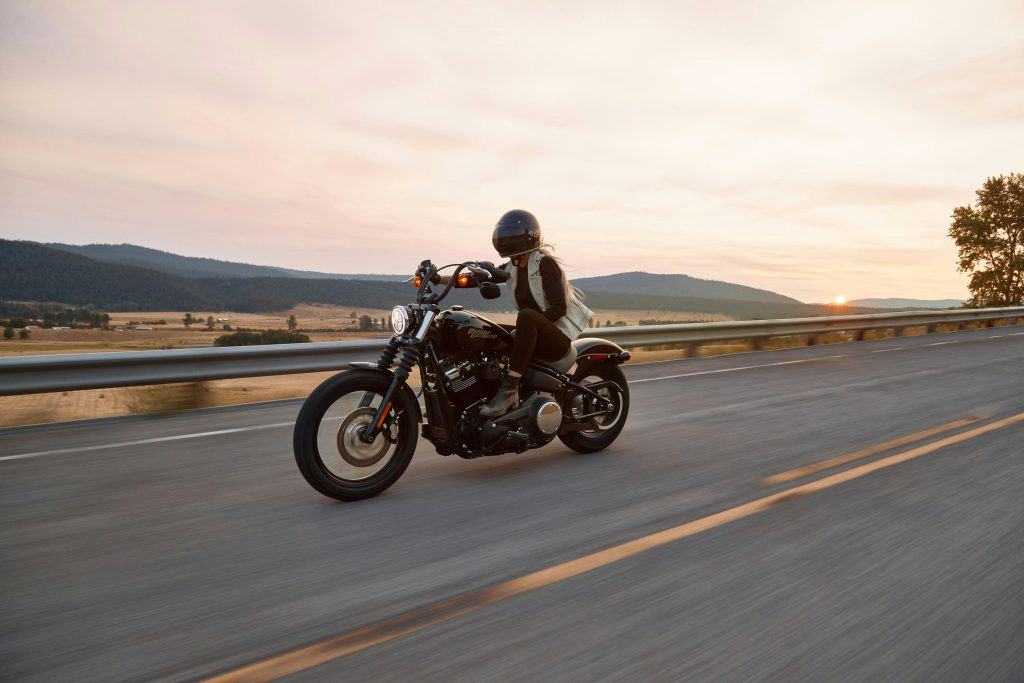
Conclusion
Starting your motorcycling journey is one of the most rewarding adventures you can undertake. With proper training, the right gear, and a focus on safety, you’ll be well on your way to experiencing the freedom and joy that motorcycling offers. Remember, every expert rider was once a beginner too! Take your time, practice consistently, and never stop learning. From me to you; welcome to your two-wheeled adventure. Get ready to enjoy the ride of a lifetime!

